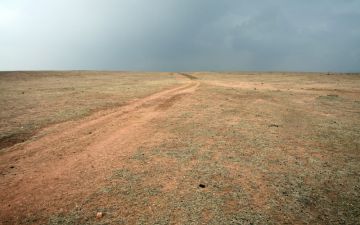Desertification is one of the most important environmental challenges facing the world today, however it is arguably the most under-reported. Desertification is the gradual transformation of arable and habitable land into desert, usually caused by climate change and/or the improper use of land. Each year, desertification and drought account for US$42 billion loss in food productivity worldwide.
In China, nearly 20% of land area is desert. As a result of a combination of poor farming practices, drought and increased demand for groundwater, desertification has become arguably China's most important environmental challenge. As the effects of increasing desertification appear, farmers are forced to abandon their land, levels of rural poverty rise and the intensity of sandstorms, which batter northern and western China each year, continue to intensify.
By traveling on China's 'desertification train' on the K117-T69-K886 route that dissects China's major northern deserts (The Gobi, Taklamakan and Badain Jaran) from Beijing, on the east coast of China, to Kashgar, on the western borders, photojournalist Sean Gallagher reports on the various implications of desertification on people's lives across the breadth of China.
